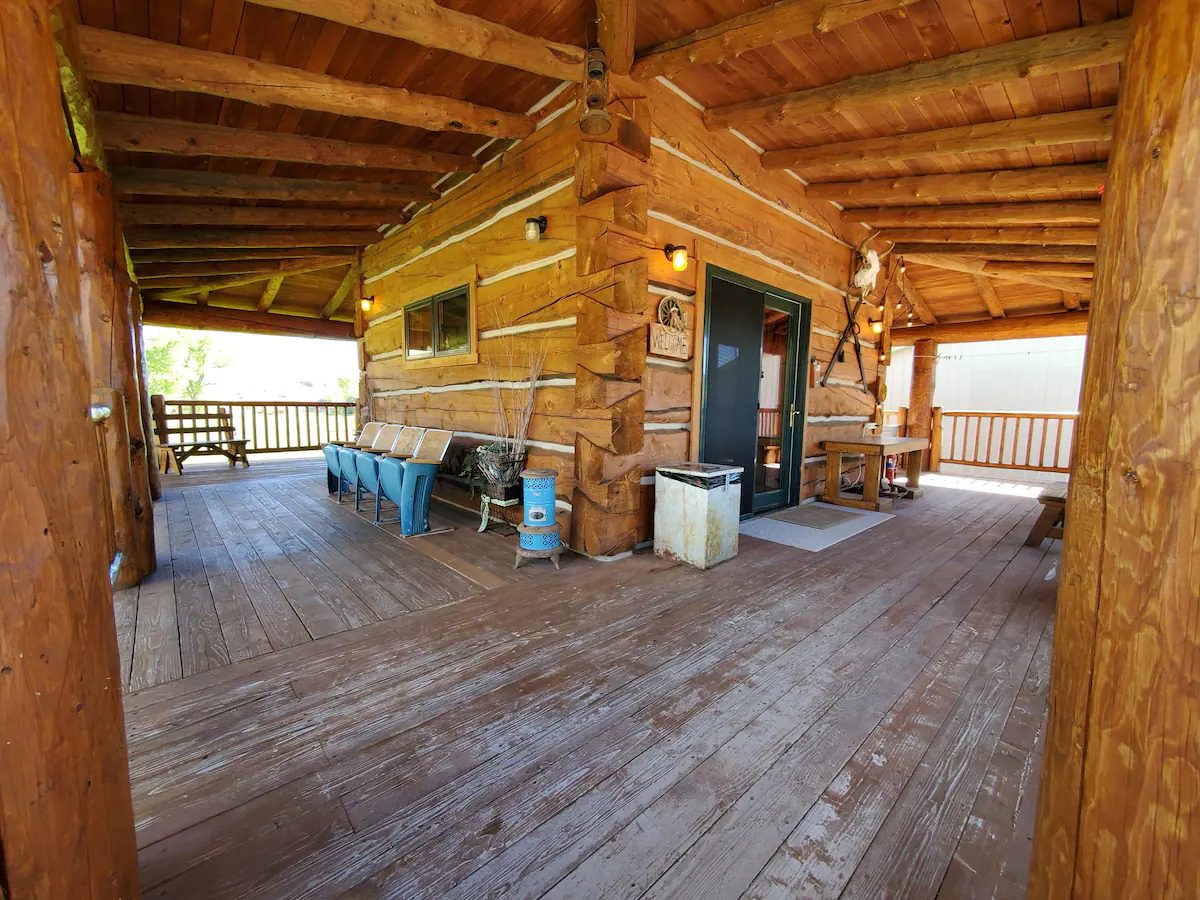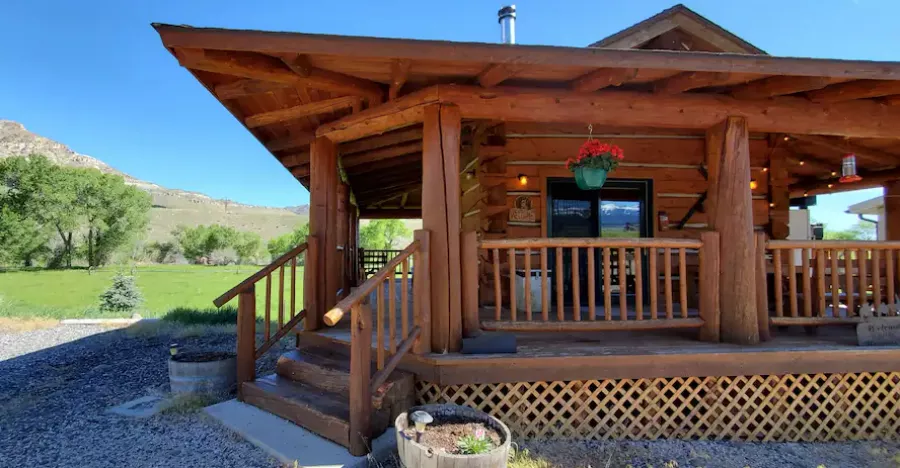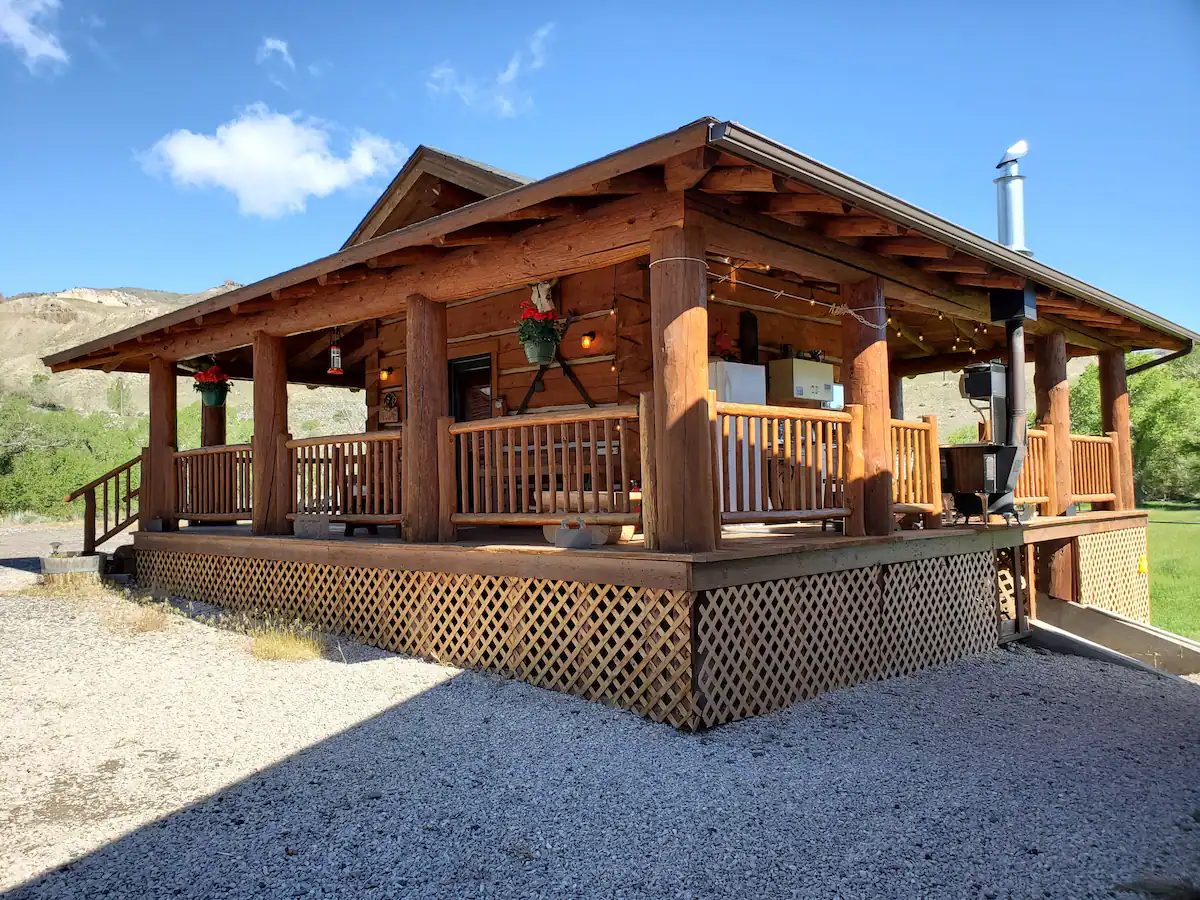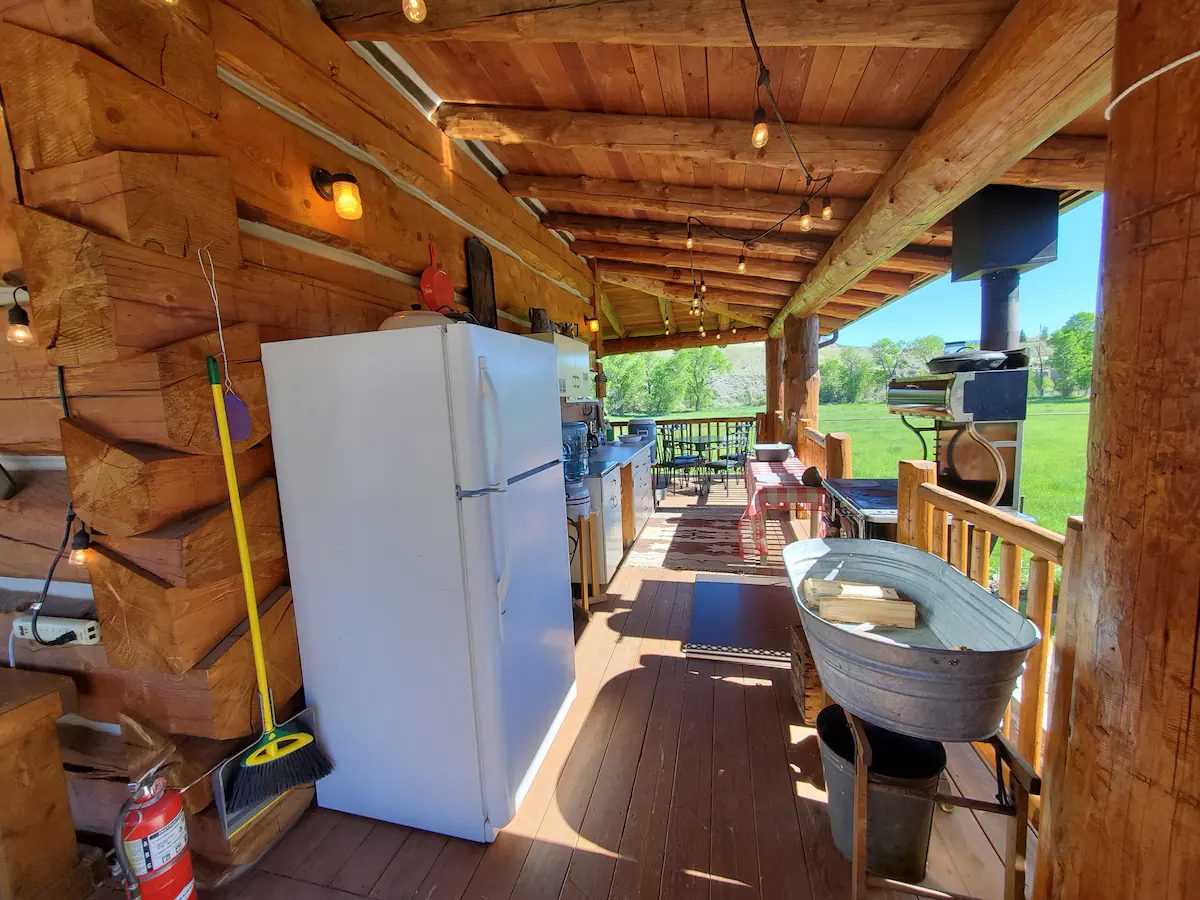You’ll be sure to love this unique log home located in Cody, Wyoming, United States. Enjoy a vacation stay in this handcrafted log cabin building, where you can find your pioneer spirit, and prepare meals on a wood cook stove located on the wraparound porch with a camp-style kitchen area. The log cabin is off the beaten path, not the closest listing to Yellowstone or Cody. The off-grid log cabin has no running water, this cabin allows you to experience life in the past. The cabin building is heated with a wood-burning stove. The summer kitchen is supplied with a cast iron wood cook stove, you can pack your water from the hydrant and heat water for the cowboy wash basin. The spacious wrap-around porch extends to an outdoor living area, allowing for a perfect place to relax and watch the sunset. Enjoy the beautiful mountain views, listen to the flow of the Shoshone River as well as watch various wildlife passing through the meadow.
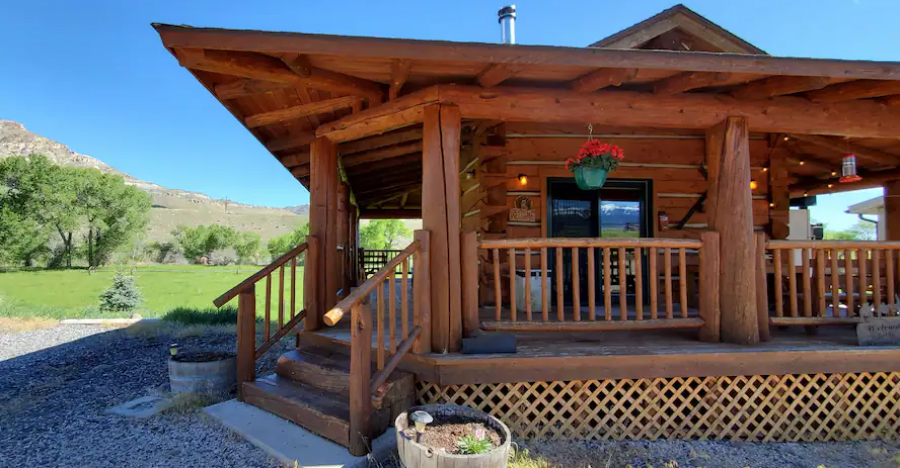
Handcrafted log home designs hold a special place in the history of North America. They were among the first structures that were built by European settlers on the North American continent. In the beginning, handcrafted log cabins were about simplicity and efficiency. Typically log cabins were built with the hardiest trees in the forest including oak, and walnut and hard work, with settlers using the most basic building tools at their disposal including the ax, the drawknife, and the adze to craft anything from wood dwellings to churches, many of which are still standing today.
Today, exceptional log cabin craftsmanship and longevity remain the hallmarks of handcrafted log homes, and the building process and tools used to create them are little changed from those of long ago. What has drastically changed, however, is the artistry that goes into the design and logs house construction. When it comes to building a handcrafted log home builders can choose from uniquely shaped logs that span the full length of a wall, then cut and notch each timber to fit one specific location in the log house structure. Once the cuts are made, erection is given a test run, as the handcrafter stacks the logs in the yard just as they would on-site, to ensure a precise fit. The logs are then labeled, disassembled, and trucked to the job site for log house construction.
Handcrafted logs are usually larger than milled logs, and can range in diameter from 14 to 28 inches and span as long as 45 feet. Douglas fir and western red cedar are two of the most popular used tree species, thanks to their straight grain and dense wood fibers. Along with wood species, you’ll have to decide what shape you want your walls to be. Two common log profiles include round and square, and in terms of corner systems, many handcrafters favor saddle-notch (round) or dovetail (square) corners to create a tight joint. The log surface can be fairly smooth to the touch or highly textured. The bark can be removed completely or some traces can remain (a technique called skip-peeling) depending on the look you’re hoping to achieve.

